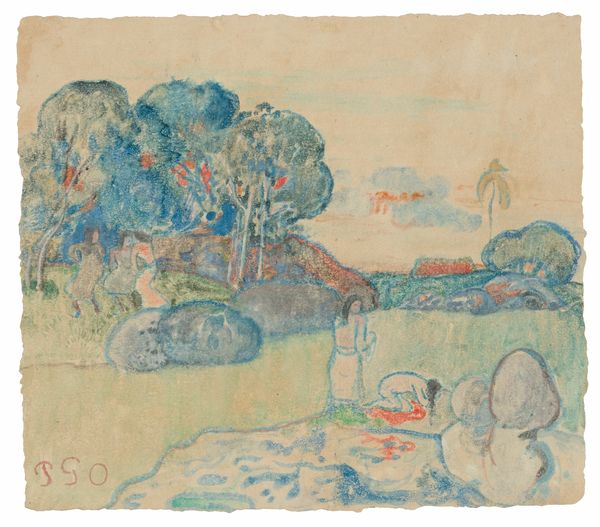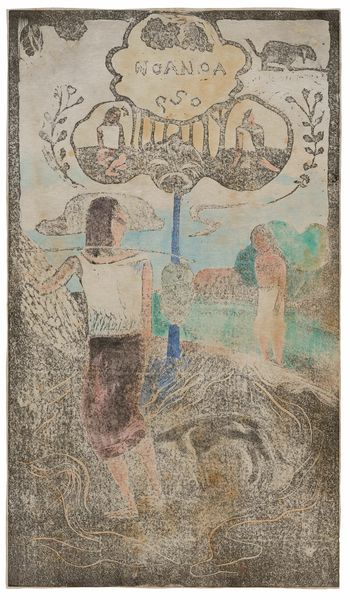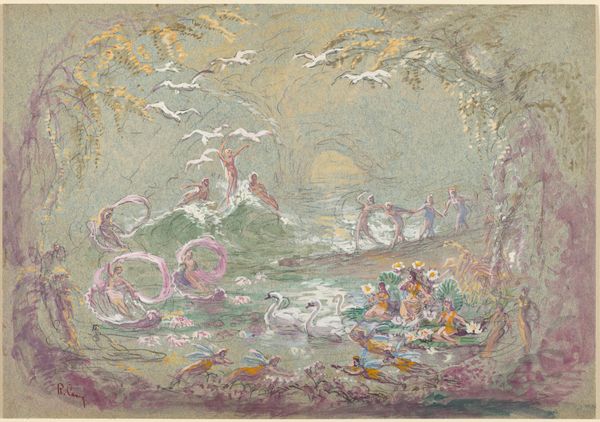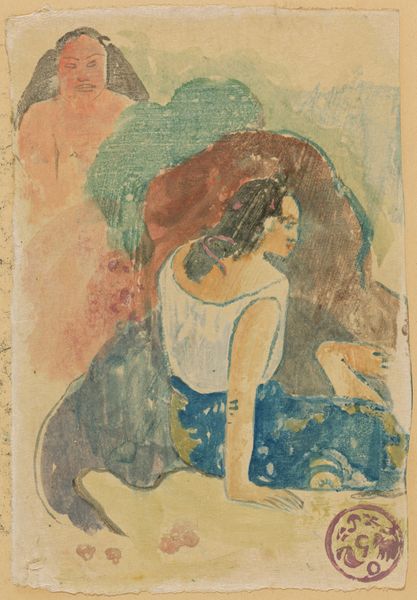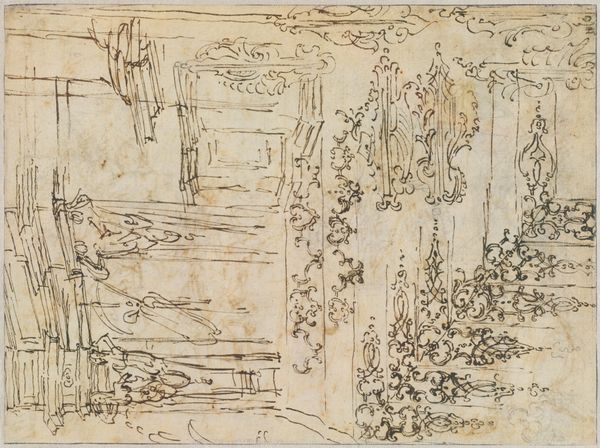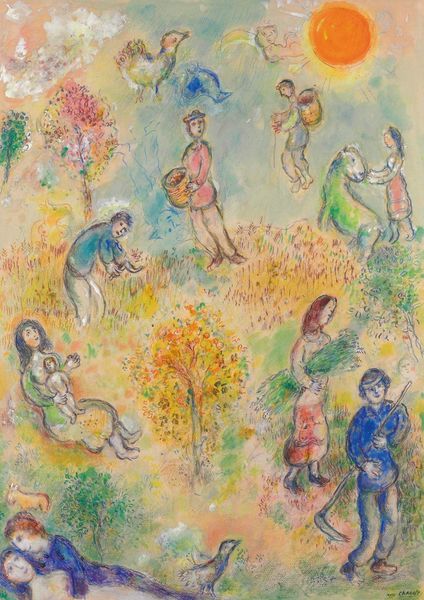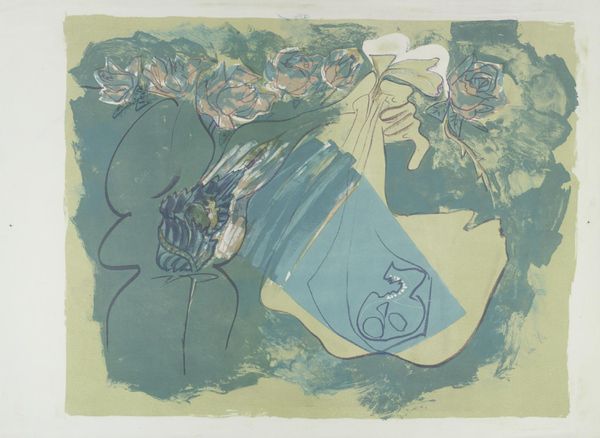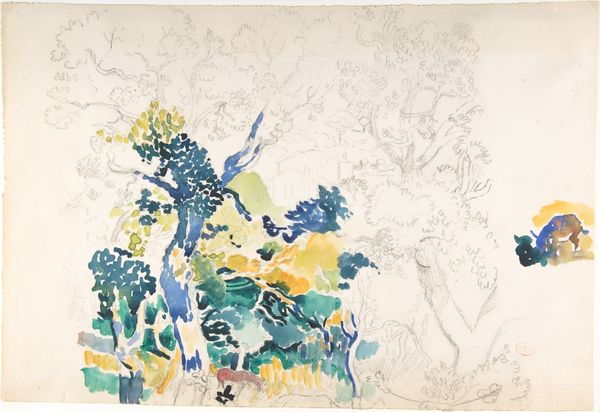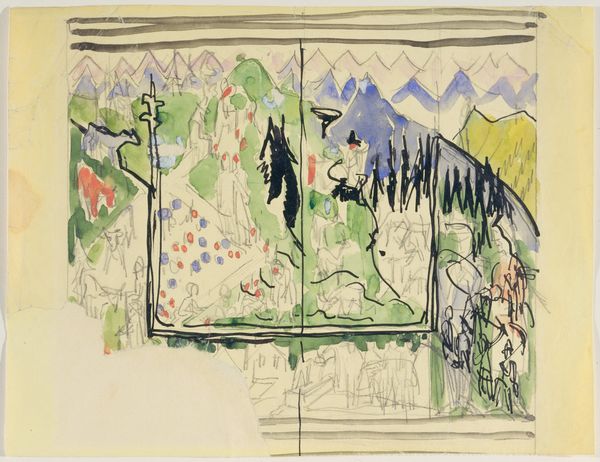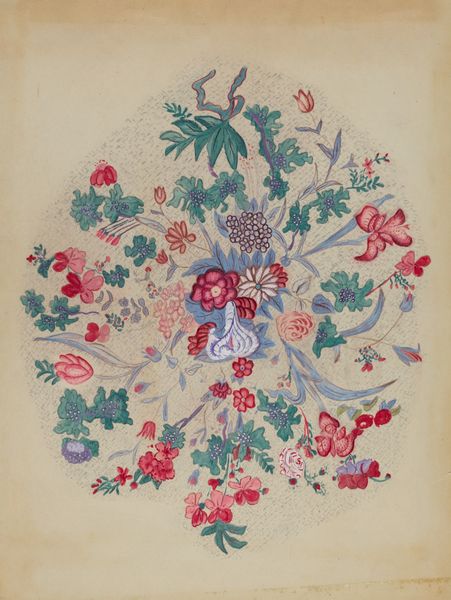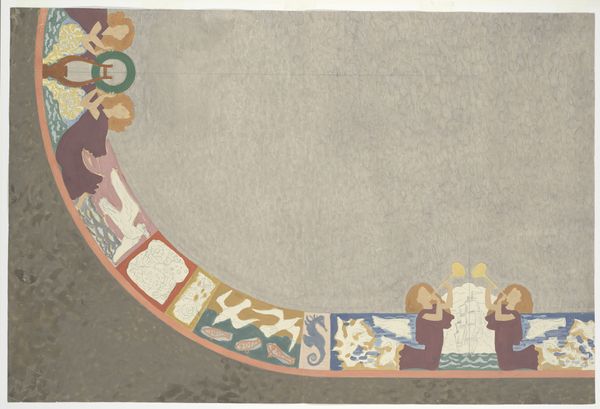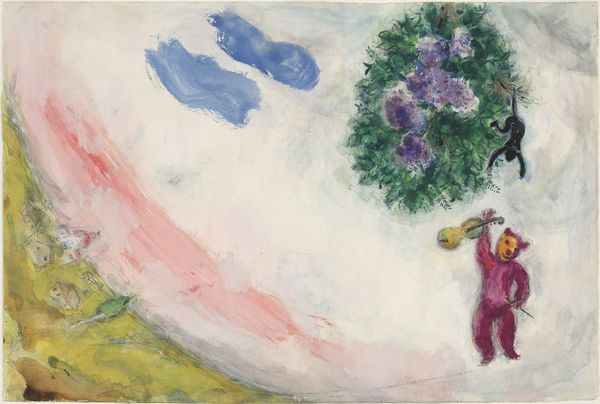
Design for a Fan Featuring a Landscape and a Statue of the Goddess Hina 1900 - 1903
0:00
0:00
drawing, painting, print, gouache, paper, watercolor
#
drawing
#
water colours
#
painting
# print
#
gouache
#
landscape
#
figuration
#
paper
#
watercolor
#
orientalism
#
symbolism
#
post-impressionism
Dimensions: 208 × 417 mm (primary and secondary supports)
Copyright: Public Domain
Curator: Welcome. The piece before you is Paul Gauguin's "Design for a Fan Featuring a Landscape and a Statue of the Goddess Hina," dating from around 1900 to 1903. It's a gouache, watercolor, and crayon drawing on paper, currently residing here at The Art Institute of Chicago. Editor: A fan, huh? First impression—it feels like a fragmented paradise. Those dreamlike colors! The landscape is vibrant but faded somehow, as if seen through the mists of memory. Curator: The fan format is interesting; It's not simply decorative. Gauguin appropriated a Japanese art form which allowed him to push his interest in primitivism and exoticism further. Fans were considered high art in Japan, a market and culture where his work found validation when France did not provide enough support. Editor: Validated or not, I feel Gauguin simplifies and romanticizes Tahitian culture and nature here; those strong colors hint at darker truths. But isn't that the point of art sometimes – to conjure fantasy and illusion, even if that illusion is wrapped in historical complexity and tension? I'm lost in the idea of Hina as both serene deity and contested cultural symbol. Curator: Precisely. Hina's prominent placement reveals the merging of Gauguin’s own symbolism and Tahitian mythology. Look at the structure. The goddess appears as an untouchable figure. The local islander on the horse occupies an arc below, separate from her elevated platform. We might also see a critique of power dynamics at play, colonialism represented within the arc itself. Editor: I love how Gauguin's post-impressionist touch is felt here – like the freedom he's giving us to project and engage on a canvas shaped like possibility itself. I'd be happy to keep a summer breeze going while contemplating the loaded power and history embedded in every splash of color here. Curator: Ultimately, the "Design for a Fan" reveals a unique synthesis, blurring boundaries between art, craft, commerce, and cultural representation at the beginning of the twentieth century. Editor: It’s not a simple painting on a canvas—it’s an artifact asking complex questions that linger long after the fan is folded away.
Comments
No comments
Be the first to comment and join the conversation on the ultimate creative platform.
